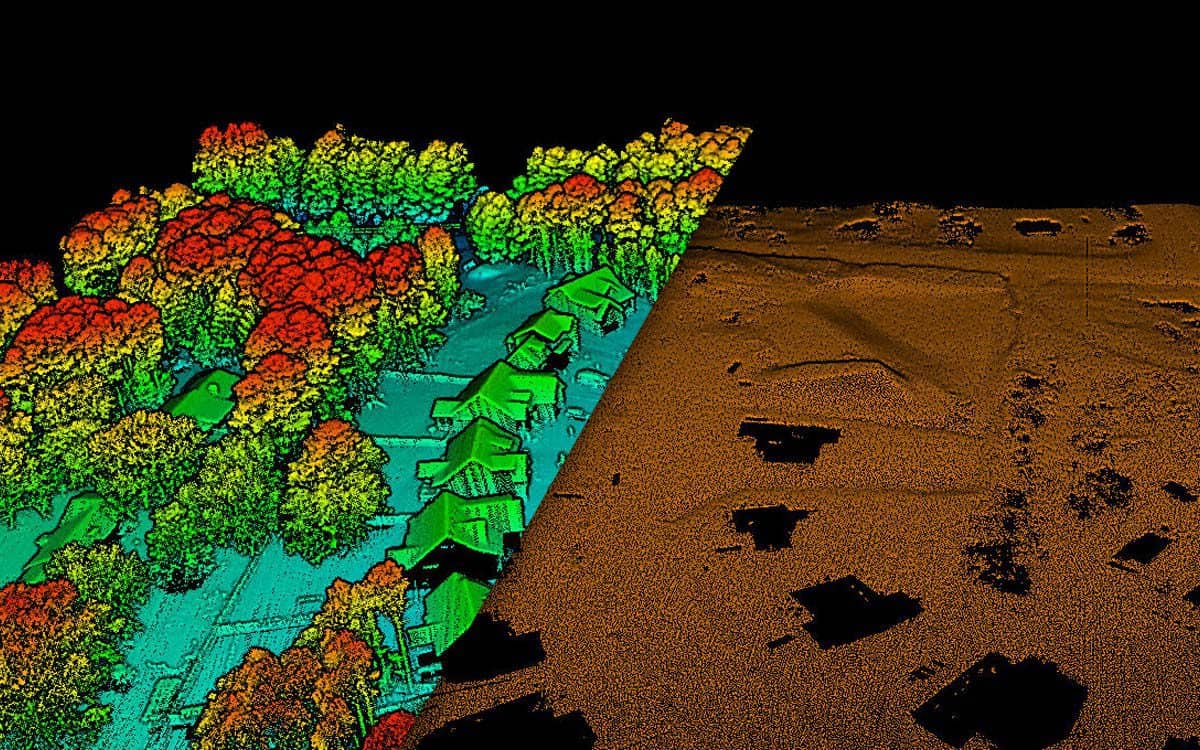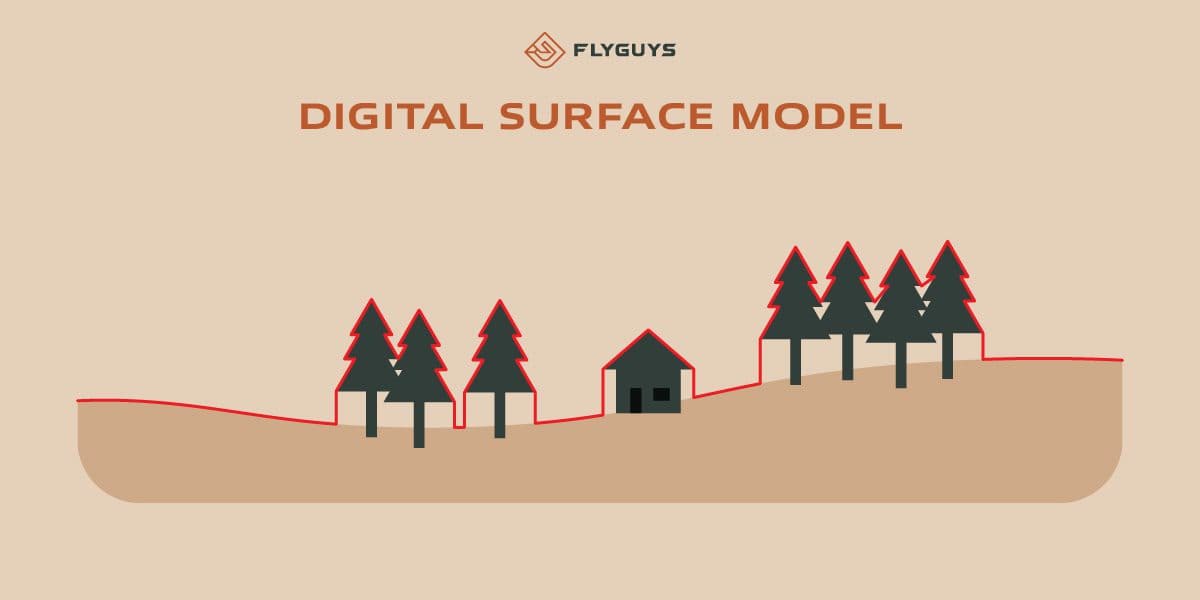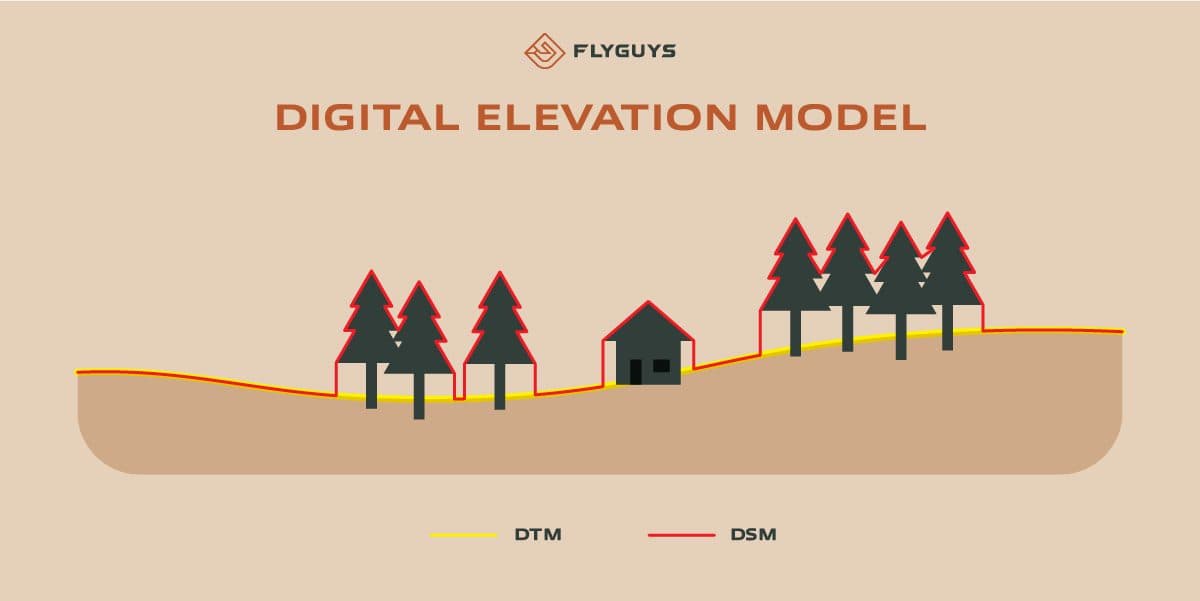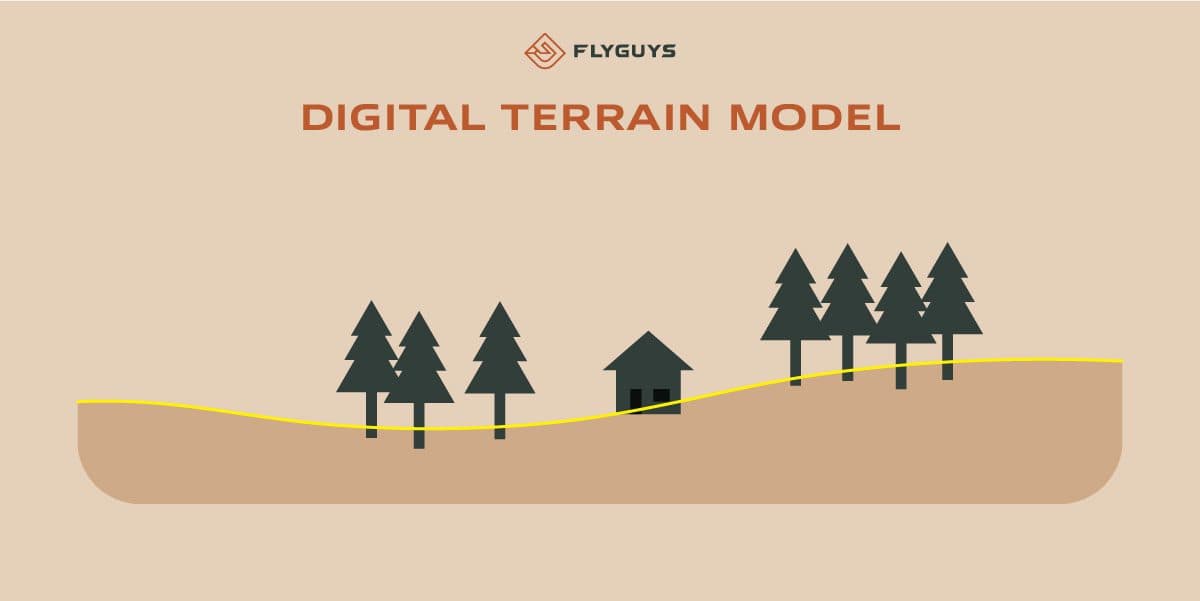
Understanding Digital Surface Models, Digital Terrain Models and Digital Elevation Models: A Comprehensive Guide to Digital Models of the Earth’s Surface
Elevation data is critical for a wide range of applications in various fields. It also plays a key role in helping us better understand and manage the Earth’s resources and environment. The data is collected through various techniques, typically aerial data capture and LiDAR sensors.
Here are some of the most common ways elevation data is used.
Mapping & Surveying. Elevation data create accurate maps and topographic surveys of the Earth’s surface. This information can be used for urban planning, forestry, and natural resource management.
Infrastructure planning and design. The data can be used to plan and design projects such as roads, bridges and buildings. The data collected is critical for determining the optimal route, slope and elevation of these projects and ensuring they are safe and structurally sound.
Hydrology. Elevation data is used to model water flow and drainage which is critical for predicting flood risks, managing water resources and protecting natural habitats.
Environmental monitoring. Elevation data monitor changes in the Earth’s surface over time, including erosion, land use changes and deforestation. This information helps scientists better understand the impact of human activities on the environment and help develop strategies for mitigating negative effects.
Disaster response. Elevation data assess the damage caused by natural disasters which can help emergency responders plan relief efforts and allocate resources more effectively.
Once the elevation data is collected, it is processed and analyzed using software tools that generate 3D models and visualizations of the Earth’s surface. The two different types of elevation models are Digital Surface Model (DSM) and Digital Terrain Model (DTM). Each model represents the elevation data collected depending on how the data needs to be applied.
While they may seem similar at first glance, each model has its own unique features and applications. Let’s explore the differences between these models, their benefits, and why and how they are used.

Digital Surface Models (DSMs)
Digital Surface Models, or DSMs, represent the topography of the earth’s surface, including all objects on it, such as trees, buildings, and other features. DSMs are created using aerial data capture methods, like LiDAR (Light Detection and Ranging) or photogrammetry. LiDAR uses laser beams to measure the distance between the sensor and the ground, while photogrammetry uses aerial photographs to create 3D models.
There are many benefits of DSMs. For one, they accurately represent the earth’s surface, allowing users to accurately measure features and make decisions based on that information. 3D visualization of the Earth’s surface allows users to see the surface and features in a more realistic and immersive way. This is particularly useful in applications such as urban planning and design where visualizing the impact of planned developments on the existing landscape is critical.
Digital surface models offer several advantages over traditional topographic mapping. Because DSMs are typically created using LiDAR or photogrammetry, they provide high-resolution data. This means that DSMs can capture much more detail than traditional topographic maps, often based on field surveys, and may not accurately capture all features. The high-res data also provides highly accurate elevation measurements. This allows for more precise calculations of slope, aspect and other terrain characteristics, essential for industries that model water flow and drainage.
Digital Terrain Models (DTMs)
Digital Terrain Models, or DTMs, represent the bare earth surface without any features such as buildings or vegetation. DTMs are created using methods similar to DSMs, such as LiDAR or photogrammetry, but require additional processing to remove objects above the ground. This process is known as “bare-earth extraction.”
A digital terrain model has three main components:
- The surface itself
- The elevation at each point on the surface
- The slope at each point on the surface
This model is similar to DSM, but it represents only the highest points on the surface of the terrain instead of every point on its surface as DSM does. DTMs can be used to create contour lines. This is useful for building roads or railroad tracks because they allow you to see if there are any obstacles such as trees or rocks in your way before you start building them.
DTMs are particularly useful for terrain analysis, such as slope and aspect calculations, hydrological modeling and geological applications.

Digital Elevation Models (DEMs)
Digital Elevation Models, or DEMs, represent the elevation of the earth’s surface. DEMs can be either a DSM or DTM. The resulting model shows the elevation of the earth’s surface. The DEM is essentially a superset of the DSM and DTM.
DEMs are a 3D grid of terrain elevations collected from an area with satellite imagery or LiDAR technology. DEMs are useful for visualizing landscape changes over time, creating simulations of natural phenomena like landslides and floods, and measuring land use changes over time — as well as many other applications. They can also be combined with other models to create more detailed representations of the earth’s surface.
Benefits of Digital Models
Digital models offer numerous benefits over traditional methods of mapping and surveying. They accurately represent the earth’s surface, allowing for better decision-making and planning. They can also be created quickly and efficiently using aerial data capture methods such as LiDAR, which reduces the need for ground-based surveys and minimizes environmental impact.
In addition, digital models can be easily shared and used in many applications, making them a valuable resource for many industries. They can be used in GIS software for spatial analysis, integrated into 3D modeling software, or applied in conjunction with other data sources such as satellite imagery.
Aerial Data Capture and LiDAR
Aerial data capture methods such as LiDAR have revolutionized how we map and analyze the earth’s surface. LiDAR is a highly accurate and efficient method of collecting data and can be used to create highly detailed digital models of the earth’s surface.
LiDAR emits laser beams from a sensor mounted on an aircraft, which bounce off the earth’s surface and return to the sensor. The time it takes for the laser beam to return to the sensor is used to calculate the distance between the sensor and the ground.
LiDAR can be used to collect data over large areas quickly and efficiently, making it ideal for creating digital models of the earth’s surface. It is particularly useful in complex topography areas where ground-based surveys would be difficult or impossible.
The Simple Breakdown
DSM
- Includes all objects on the earth’s surface such as trees, buildings, and other features. In other words, it represents the topography of the earth’s surface including all objects on it.
- Useful in applications such as land-use planning, urban modeling, and forestry.
DTM
- Represents the bare earth’s surface elevation with all features removed, including buildings, trees, and other objects.
- Therefore, additional processing is required to remove any objects above the ground.
- DTMs are created by removing objects from a digital surface model (DSM) to create a more accurate representation of the terrain.
- Particularly useful for terrain analysis, such as slope and aspect calculations, hydrological modeling, and geological applications.
DEM
- Represents the earth’s elevation.
- Useful for applications such as urban planning, forestry and land-use planning.
- Provides a more complete understanding of the topography of a given area.
DSM, DTM, & DEM
- Created using similar methods such as LiDAR or photogrammetry.
- Provide elevation data.
As technology advances, digital models will become more prevalent and valuable in many areas. By understanding the difference between these models and their benefits, we can continue to make informed decisions and utilize these powerful tools to their fullest potential so we can understand the world around us.
